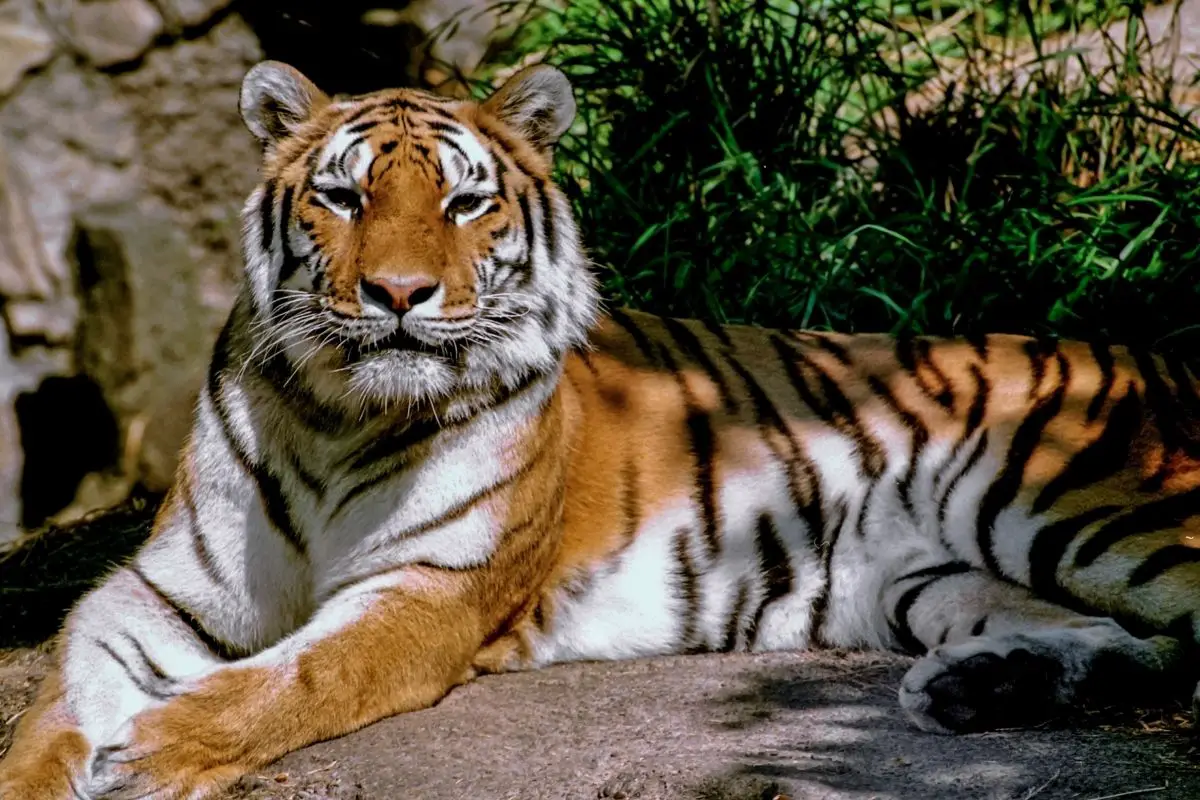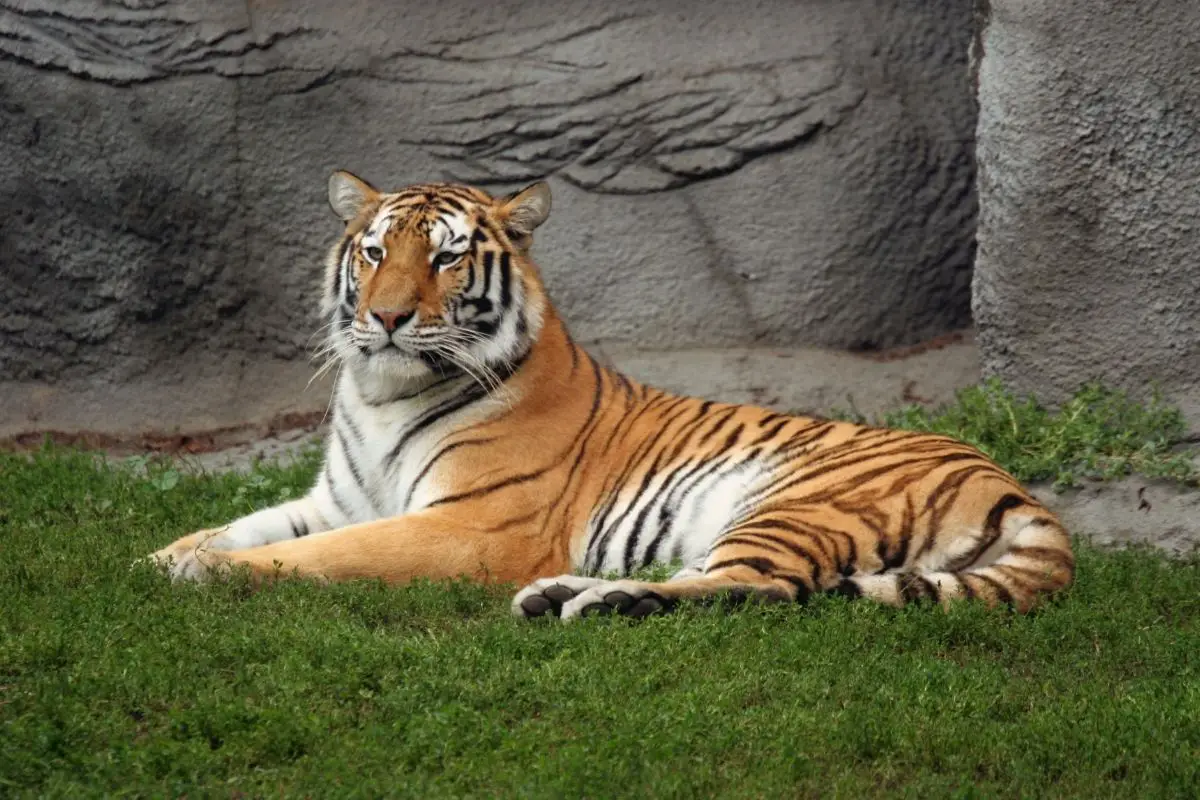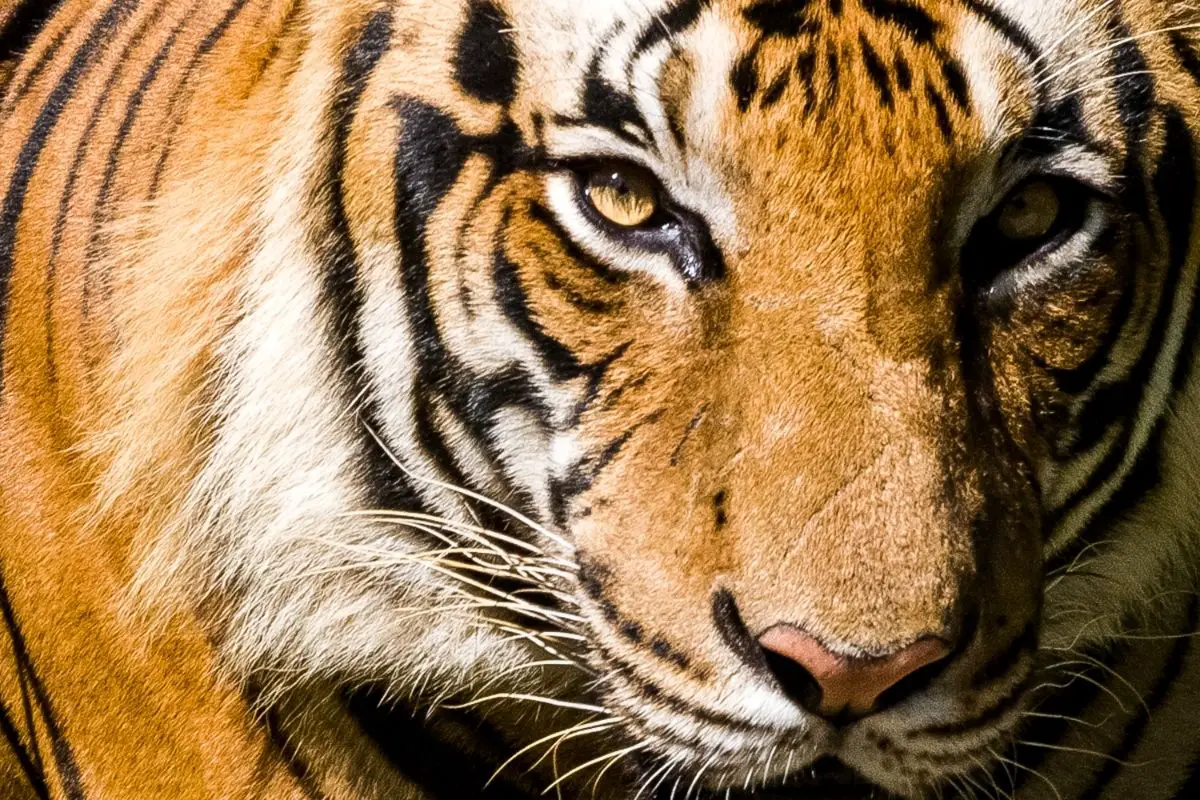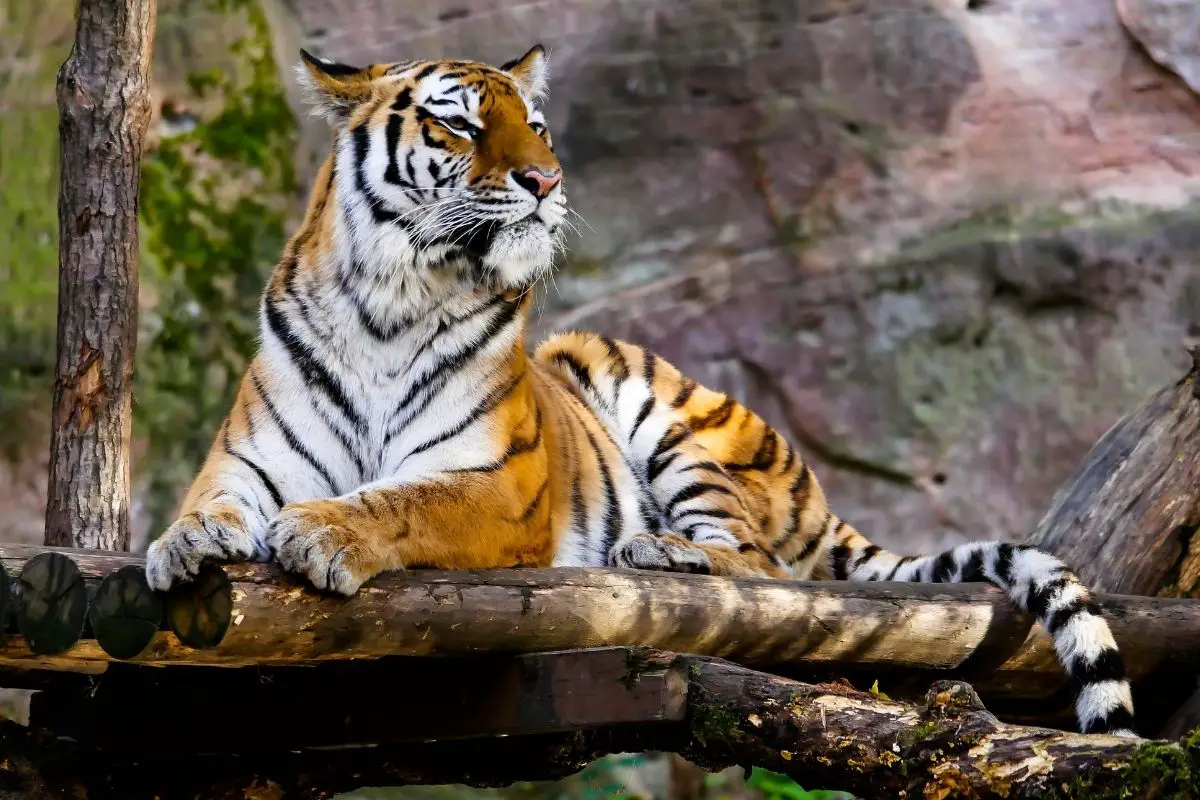When you picture a tiger with its iconic orange and black stripes across its fur, you are likely thinking about the Bengal tiger.
Also known as the Indian tiger, its population is declining yet it remains a cultural icon and one of the most common tiger breeds.

One of the big cats and a predator at the top of the food chain, they are also known as Indian tigers or Royal Bengal tigers.
In this guide, we will cover everything you need to know about Bengal tigers.
This includes their natural habitat, their diet and hunting habits, as well as their size, and some interesting facts.
The Bengal Tiger
As one of the most recognized wild animals in the world, the species known as Panthera tigris needs little introduction.
The Bengal tiger is well-known in wider culture and is featured in art and literature.
You are also likely to find a Bengal tiger at the top of a wildlife photographer’s wishlist, and they can also be seen on Bangladeshi coins and notes.
Though they remain an endangered species, the Bengal tiger is a great example of how specific efforts by various wildlife protection organizations can help a species come back from being almost extinct.
As a member of the Panthera family, the Bengal tiger is rightly known as one of the most renowned big cats alongside leopards, jaguars, lions, cheetahs, and Snow Leopards.
However, tigers are the largest of those big cats but the Bengal tiger is not the biggest tiger of them all.
That title belongs to the Siberian tiger which can weigh up to 300 kilograms, compared to the Bengal tiger’s top weight of around 225 to 280 kilograms.
Size And Appearance
You should know a Bengal tiger by its iconic black and orange stripes which act as their distinctive marks, as a fingerprint would on a human.
If you do come face to face with a Bengal tiger, you would struggle to take your eyes off its formidable frame.
At a shoulder height of 0.9 to a single meter, their tail is just as long and their length is between 1.6 and 2 meters.
Only the Siberian tiger is larger than a Bengal tiger in the tiger species with the males measuring between 2.7 and 3.1 meters compared to 1.6 to 2 meters for a Bengal tiger.
The weight of a Bengal tiger can also be quite formidable as they tend to weigh between 120 and 280 kilograms while remaining relatively quick and stealthy.
Though highly dangerous in its own right, the Bengal tiger is well sought after by poachers.
There were around 45,000 Bengal tigers in the wild in 1900 but their hunting has meant that the number has dwindled to around 2,200 being left.
Natural Habitat
Bengal tigers can typically claim India and Bangladesh as their homeland.
It is in India where you will find the vast majority of this impressive creature and the tigers are usually found in the temperate and subtropical upland forests.
You would also see a Bengal tiger on the Bangladeshi currency and they are also found in the Sundarbans mangrove region, even being known to swim between the islands and these are the only tigers known to live well in a mangrove habitat.
These tigers can also be found in the prime lowland forest of Nepal and the subtropical Himalayan foothills of Bhutan and in the north temperate forests of that country.
One of the remarkable features of a Bengal tiger is its adaptability to live in hot and cold climates and across habitats that include wetlands and mangroves, but also tropical, subtropical, and temperate rainforests.
Diet And Hunting Technique
With their impressive set of teeth, a Bengal tiger is made to hunt but they wait until night to save their energy.
For most of the day, these tigers tend to enjoy their own company and get some rest in a shaded area.
When the light is just right at dusk or dawn, you can expect to see a Bengal tiger on the hunt in the tall grass.
These are stealthy creatures who use their natural habitat, including trees, to stalk their prey and then discreetly attack.
You may spot some white spots of fur on the rear side of each ear on a Bengal tiger and there is an evolutionary reason behind this.
When the parents are teaching their young how to hunt, these white spots make them easy to follow in the low light.
As Bengal tigers decide to stalk their prey at dusk and dawn, the young can easily follow and learn from their parents.
Their prey includes species of deer, wild boar, water buffalo, antelope, and water buffalo.
They have also been known to stalk and ambush foxes, crocodiles, leopards, and bears which may seem surprising.
While they can eat up to 40kg in a single sitting, this is a rare occurrence.
Whatever the tiger captures for food, it typically drags it across to a protected area to strip it of its meat and grab its feed.
Breeding

The gestation period for a Bengal tiger is around 95 to 114 days.
This type of tiger can expect between one and five cubs in its litter, though a female Bengal tiger can produce more than one litter in its lifetime.
The Bengal tigers like to maintain their home range with the females choosing areas that they deem suitable for raising their young.
That typically means a nearby water source to cool down in on warmer days.
The Bengal tiger does breed all year round with the cubs learning how to hunt from the age of six months onwards.
At an age of between two and three years old, the cubs will leave their mother. By this point, the mother will return to heat and start breeding all over again.
Threats
Several threats face the Bengal tiger and the primary ones are habitat loss and poaching.
Well-organized poaching gangs will target the Bengal tiger and there is still an illegal trade between China, India, and Nepal.
The body parts and bones of this well sought after creature are of high value and these gangs prove difficult to stop, even in protected areas.
Climate change is also an issue, particularly for those Bengal tigers that live in mangrove areas that are susceptible to the rise of sea levels.
Interesting Facts
- Just as humans have fingerprints, the stripes on a Bengal tiger are unique to that specific individual tiger.
- Despite their size, Bengal tigers can also climb trees due to their impressive retractable claws.
- If you were to look into the mouth of a Bengal tiger, and we would not recommend it, you would see the largest canine teeth of an existing cat at 4 inches long.
- Bengal tigers can live in the wild from ten to 15 years, though in captivity you can extend that expected lifespan to around 20 years.
- The Bengal Tigers is the nickname given to the East Bengal regiment of the Bangladeshi Army.
- A Bengal tiger appears on the logo of the Bangladesh Cricket Board
- If you want to remain safe around a Bengal tiger then remember that they like to stalk and ambush their prey. With that in mind, residents of some jungle villages are known to wear masks of human faces on the back of their heads with the implication that the tigers believe that a person is looking straight at them.
- Bengal tigers are not exactly new to India as they are believed to have been in the region for around 15,000 years which puts them back to the Late Pleistocene period.
- When their typical prey is in short supply, a Bengal tiger will target any nearby predators which include wolves and leopards
Final Thoughts
Bengal tigers are impressive creatures that go some way to explaining why they are so highly sought after by poachers.
Their body parts and bones are highly valued yet there are continued efforts to protect and stabilize their population.
Largely due to their impressive stature, they are celebrated in India and particularly Bangladesh where they appear on the nation’s currency and the logo of their cricket board.
Frequently Asked Questions
What Can Be Done To Protect Bengal Tigers?
Several main protected areas exist to protect the best natural habitat for Bengal tigers throughout India and Nepal.
These areas help to protect and stabilize the Bengal tiger population, even though overall numbers are decreasing.
The Wildlife Protection Society of India was also set up to counteract the illegal poaching and even carry out confiscations at various borders.
There is also the ‘Save Tigers Now’ campaign which encourages the general public to stop buying wildlife products when abroad.
Are Bengal Tigers Fast Swimmers?
You may have seen footage of a Bengal tiger swimming across a pool of water.
They are indeed excellent swimmers and look to spend around half an hour in the water daily.
They can swim at around four miles an hour though take their time over long distances.
- Bengal Cat vs Wild Bengal Tiger: Complete Comparison 2025 - October 31, 2025
- Complete Wild Cat Spotting Guide for Hikers 2025 - October 31, 2025
- Lynx vs Bobcat: Complete Field Identification Guide 2025 - October 30, 2025








